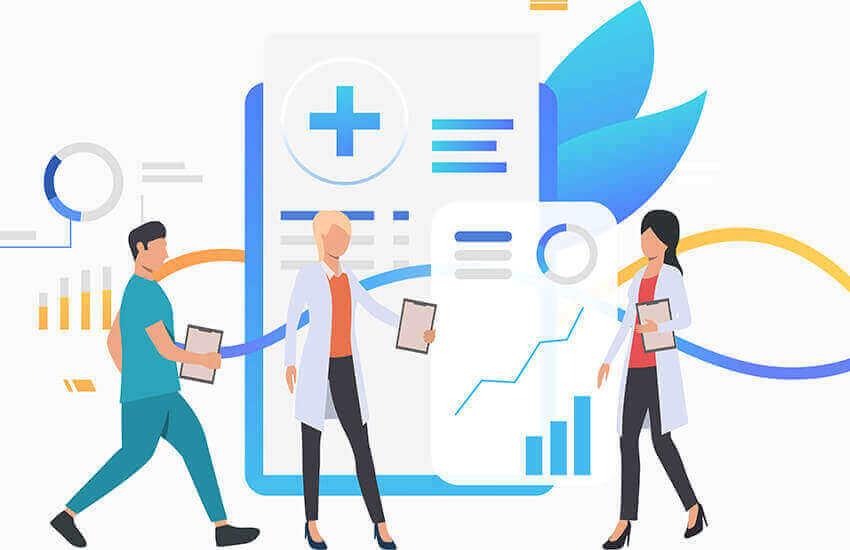It’s an undebatable fact that EHR systems are one of the strongest pillars of technology in a healthcare setting. Vitals to all, clinical, administrative, and financial operations, electronic health records, and electronic medical records will only evolve in the future. Especially after Covid-19, healthcare technology is rapidly advancing to accommodate the changing clinical and economic landscape. And EHR integration and implementation show their benefits quite well. Be it integrated with telehealth solutions or practice management solutions.
According to Epic, EHRs will continue to boost the efficiency of clinicians and administrators to enable them to spend more time focusing on patients rather than handling administrative workloads. Moreover, EHR optimization will boost operations in the next few years. The ability of EHR optimization to more efficiently identify gaps in treatment or the possibility of duplicative care is a huge benefit.
The COVID-19 pandemic has highlighted pre-existing issues in the healthcare delivery system and has taken a toll on the physician workforce in the United States. A huge increase in occupational burnout and lower satisfaction with work-life integration, influencing the quality of care, turnover, and work effort decreases, became a major issue. Optimizing EHR systems is a potential way to mitigate these issues.
If you’re considering optimizing your electronic health record system, you must first comply with EHR standards. Implementation or integration is different. Policies and procedures are specifically created to ensure the proper usage of electronic health records. EHR standards are rarely considered. So, here we’ll talk about the different electronic health records standards and understand why these are important.
Why are EHR Standards Important?

When used consistently, EHR use will result in fewer medical errors, lower expenses, increased revenue, more accurate medical records, better standards compliance, increased efficiency, and higher levels of physician recruitment. And all this is possible if EHR standards are ensured. EHR standards are a grouping of healthcare facilities’ policies and procedures organized by workflow. When healthcare organizations establish standards, it’s crucial to consider what is necessary for the EHR at the front desk, with the doctors and providers throughout the visit, and even for activities outside the patient’s visit.

The obvious rationale for EHR standards is to regulate how information is entered into the EHR. This is one of the best reasons because continuous support for the EHR systems becomes tremendously easy when the EHR standards are maintained in a consistent way. Other reasons are those previously mentioned, which reveals why EHR standards are so significant. Besides that, return on investment (ROI) is another reason that seems more obvious than others. There is no faster method to achieve the organization’s return on investment than to ensure how well the electronic health records system is used and whether EHR standards are proper.
The implementation and continued monitoring of EHR standards can take time and effort. However, with any change and the proper use of change management, EHR standards can enable clinical staff to understand how to make the most difference in delivering patient care. Further, the formal implementation of the new electronic health records standard at a high-profile level will support their success. Once this is accomplished, continual compliance monitoring and auditing become vital. And reporting audit results will eventually serve as a way to emphasize the importance of adhering to EHR standards. Above all, healthcare organizations can truly uplift their operations by upgrading the EHR regulations.
Key EHR Standards You Must Ensure
Among different EHR standards, some key ones promote seamless electronic data interchange and interoperability. And here are some of the prominent EHR interoperability standards are-
1. Health Level 7 (HL7 International)

Health Level Seven International, or HL7 International, is a set of standards, formats, and specifications used to exchange and generate electronic health records. Some HL7 users have called on Congress to implement stricter legal interoperability standards for the healthcare IT industry. So, the HL7 standards are developed and promulgated by the healthcare IT standard-setting authority. Besides, HL7 International is also the de facto standard in the healthcare IT ecosystem.
Health Level, 7 standards in EHR regulations, define and provide formats for messaging and data exchange, decision support, rules syntax, and common health data definitions in clinical documents and EHR/PHR claims attachments, quality reporting, prescription medication product labels, and clinical genomics. Besides, the most extensively used messaging standard for sharing patient care and clinical information is HL7 Version 2. It is a database query language that allows healthcare practitioners to exchange messages that can request and contain health data. In short, HL7 International is a globally recognized organization that poses a critical EHR interoperability standard to promote the safe exchange of information and boost patient care.
2. Clinical Document Architecture (CDA) and Consolidated Clinical Document Architecture (CCDA)

HL7 International created the Clinical Data Architecture (CDA) markup standard to specify the format of medical records, such as progress and discharge summaries. This CDA is an XML-based document encoding and data communication standard and is crucial for EHRs. It defines the syntax and provides a framework for defining the entire semantics of a clinical document. Further, CDA is typically utilized in a variety of healthcare settings, including clinics, hospitals, and regulatory agencies. And most importantly, it is the most widely used HL7 standard, with six characteristics- stewardship, context, human readability, wholeness, persistence, and authentication potential.
Using the HL7 format, clinical data architecture can enable health IT systems and electronic health records to handle documents while allowing users to read them on mobile devices. It is a step toward ensuring all EHR systems can read patient records. On the other hand, CCDA, or Consolidated Clinical Data Architecture, is a popular CDA implementation guide that covers an important aspect of clinical care. Its mission of essential elements is closely related to the focus of FHIR. And it also enables interoperability between VDA, FHIR, and C-CDA. C-CDA is like a library of CDA templates and can easily integrate with any healthcare enterprise or HITSP.
3. Fast Healthcare Interoperability Resources (FHIR)

FHIR, or Fast Healthcare Interoperability Resource, has become one of the most popular protocols for connecting disparate health systems. Moreover, it offers great potential for establishing an application-based approach to interoperability and health information exchange. Developed by HL7 International and promoted as a draft data standard, FHIR was designed considering the complexity of healthcare data. And it also employs a modern, internet-based method to connect several discrete data elements.
FHIR allows developers to design apps that transcend this document-based environment by utilizing established application programming interface (API) standards. Applications can be integrated into a simple EHR operating system and feed information directly into the provider workflow, thus, eliminating the difficulties of document-based sharing, which frequently necessitates clinicians accessing data independently.
Above all, FHIR is often referred to as the missing link between the EHR and the millions of wearables and medical devices such as FitBits, Apple Watches, Bluetooth scales, blood glucose monitors, diet applications, and fitness trackers that are gaining popularity these days. This PGHD pool is expanding every day. However, it isn’t very sensible to providers unless they can quickly and readily access the most important meal of the data. So, this is where FHIR will shine. Situation-specific apps created on an FHIR platform can analyze patient-generated health data and give users a summary of relevant trends to a specific facet of chronic disease management or the well-being of patients.
Patients who see multiple doctors in different health systems no longer worry about having three or four patient portals from different EHR organizations. A single personal health record that integrates data from several formats to provide a comprehensive view of all prescriptions, issues, and allergies could connect these disparate systems and improve care coordination. And that’s how FHIR turns out to be another significant EHR standard.
Conclusion
Leveraging diverse EHR standards is critical to developing interoperability and enhancing healthcare delivery. FHIR or HL7 standards, such as the Clinical Document Architecture (CDA), provide a framework for the structured exchange of clinical information. And ensures consistent data representation and semantic interoperability. These standards encourage smooth data transmission, care coordination, and continuity among EHR systems and healthcare institutions. Also, healthcare practitioners can improve patient care accuracy, efficiency, and quality by embracing standardized formats and coding systems. As the healthcare landscape evolves, adherence to EHR standards remains critical for realizing the full potential of health information exchange and encouraging innovation in healthcare technology.
References
- https://www.techtarget.com/searchhealthit/definition/Health-Level-7-International-HL7
- https://www.healthcareitnews.com/news/what-2023-holds-ehr-optimization-sdoh-patient-access-health-equity-and-more
- https://www.healthcareittoday.com/2023/01/17/where-are-ehrs-headed-in-2023/
- https://ehrintelligence.com/news/why-is-establishing-standards-of-ehr-use-important
- https://www.thieme-connect.com/products/ejournals/pdf/10.1055/s-0038-1638463.pdf
- https://www.covetus.com/blog/how-are-cda-and-c-cda-benefitting-the-healthcare-it-industry
- https://www.healthit.gov/topic/standards-technology/standards/fhir-fact-sheets
OSP is a trusted software development company that delivers bespoke solutions as per your business needs. Connect with us to hire the best talents in the industry to build enterprise-grade software.

How can we help?
Fill out the short form below or call us at (888) 846-5382
Looking for software solutions to build your product?
Let's discuss your software solutions for your product in our free development acceleration call!
Get In Touch arrow_forwardDiscuss Your Project Handover with a team of expert Book a free consultation arrow_forward
About Author

Written by Riken Shah linkedin
Riken's work motto is to help healthcare providers use technological advancements to make healthcare easily accessible to all stakeholders, from providers to patients. Under his leadership and guidance, OSP Labs has successfully developed over 600 customized software solutions for 200+ healthcare clients across continents.

















